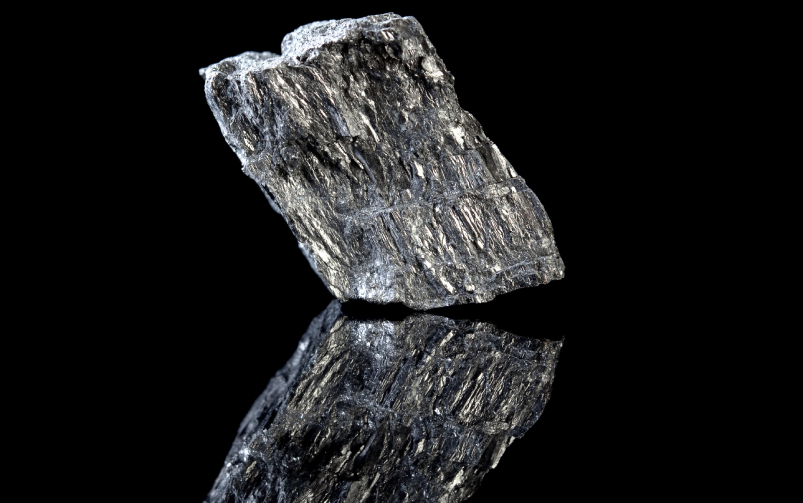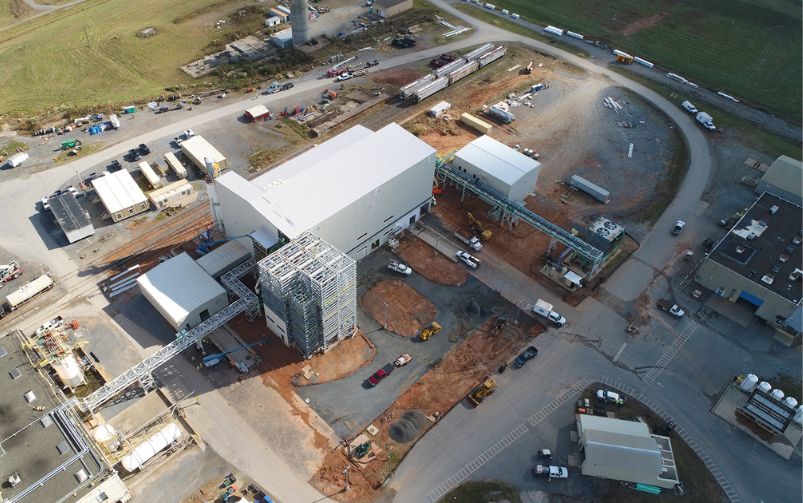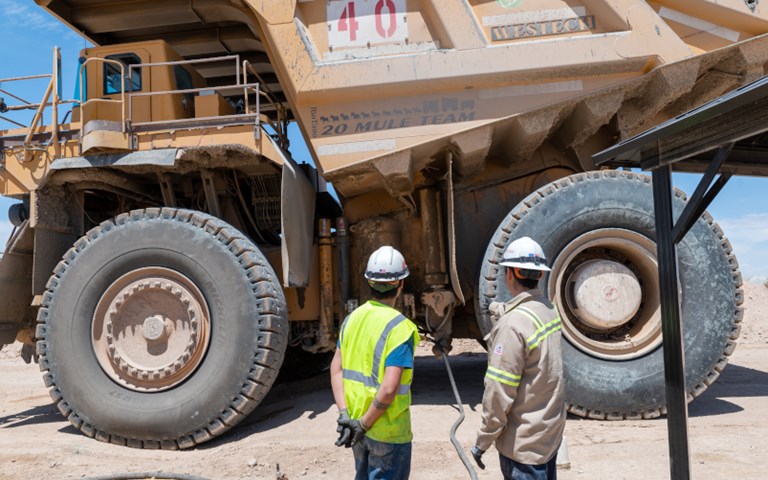The switch to renewable diesel at Rio Tinto’s Borax mine in California was incentivized by the state’s renewable diesel subsidies. Courtesy of Rio Tinto
In June, Rio Tinto announced its Borax mine became the first open-pit mine globally to transition its entire fleet, and its blasting process, to renewable diesel after a one-year pilot project with the alternative fuel.
The company said it expects the switch at its borates mine in Boron, California, to reduce its emissions by 45,000 tonnes of carbon dioxide equivalent per year, an amount comparable to taking 9,600 cars off the road.
“Obviously, [renewable diesel] still creates tailpipe emissions, but it’s a great first or second step towards decarbonization,” said Ryan Harnden, chief operating officer of Rio Tinto Borates, in an interview with CIM Magazine. Rio Tinto has said it will reduce its company-wide Scope 1 and 2 carbon emissions by 50 per cent by 2030, and estimated diesel use for its mining fleet and rail made up 13 per cent of those emissions in 2022.
The company converted a fleet of roughly 35 vehicles at Borax, including 14 haul trucks, three loaders and its dozers, graders, water carts and drills. Borax’s shovels are electric-powered. The changeover came after the Borax team spent a year running two trucks—one powered by renewable diesel and one by fossil diesel—on the same workload and functions to compare the performance of renewable diesel. The trial was in partnership with Rolls-Royce and renewable diesel manufacturer Neste.
“We did more than 5,000 hours, and all the way through we did checks on the engine, the wear components, injectors. There were no major issues,” Harnden said. He added there were slight variations in performance, with the renewable diesel-fuelled truck having slightly less power under heavy loads, but “nothing to stop us going forward.”
In May, Borax also transitioned its blasting process to renewable diesel. The mine uses hard detonators, with the explosive column composed of a mix of fuel oil and fertilizer. “It’s a very sensitive chemical combination, but we’ve been able to swap over to that without too much testing. That just shows how versatile renewable diesel is,” Harnden said.
Renewable diesel is made from the same vegetable oils and animal fats as biodiesel but is manufactured differently, and the end product is a hydrocarbon that is “chemically identical” to petroleum-based diesel, according to the United States Energy Information Administration. That equivalency means it can be used as a direct replacement for petroleum diesel. Biodiesel, on the other hand, can only be blended with traditional diesel in limited quantities due to its tendency to congeal at colder temperatures.
Harnden said Borax initially trialled biodiesel in its vehicles but found the pH level of the fuel damaged the vehicles’ engines, prompting increased maintenance time and expense.
Renewable diesel also has a lower carbon emissions profile than both biodiesel and regular diesel. According to the U.S. Department of Energy, renewable diesel emits 4.2 per cent less carbon dioxide than the same volume of regular diesel.
Rio Tinto began trialling renewable diesel at its Kennecott copper mine in Utah in October 2022, in partnership with Cummins, to determine how the fuel performs in a different operational environment and with different equipment. The mine has a “significantly long” ramp that takes trucks two hours under heavy load to get out of the pit, Harnden said.
Renewable diesel’s chemical composition and lower emissions profile have made it the fastest-growing biofuel for the past two years, according to the International Energy Agency (IEA). The IEA also pointed to favourable policies as driving renewable diesel growth, including the expansion of biomass-based diesel tax credits through to 2024 in the U.S. Inflation Reduction Act as well as the European Union’s Renewable Energy Directive—which aims to increase the share of renewable energy in transport to at least 14 per cent, including a minimum share of 3.5 per cent of advanced biofuels.
Harnden said Rio Tinto was incentivized by California’s renewable diesel subsidies, which have made the fuel “highly competitive” on a cost basis in the state. While Harnden declined to say how the costs of renewable diesel and fossil diesel compared, he added that “for us it’s within cents’ difference.”
The alternative fuel is advanced enough to deploy “anywhere in the world” as an interim decarbonization solution, he said, but scaling it often comes down to economic incentives.
In 2021, renewable diesel consumption grew an “exponential” 65 per cent from 2019 levels, the IEA reported, an increase larger than any other biofuel type. In 2022, global biofuel demand was expected to be six per cent higher than 2021, with renewable diesel making up the largest share of the expansion.
According to February projections from the U.S. Department of Energy, U.S. renewable diesel capacity could more than double in the next few years, from roughly 170,000 barrels per day or 2.6 billion gallons per year at the end of 2022 to 384,000 barrels per day or 5.9 billion gallons per year by the end of 2025. The department noted that in 2022 and early 2023, eight new renewable diesel refineries began production in the U.S.
Canada is also stepping up its renewable diesel production, according to a May market snapshot from the Canada Energy Regulator (CER). Seven new facilities are planned or under construction in British Columbia, Alberta, Quebec and Newfoundland and Labrador, which would collectively add up to 70,000 barrels per day of production by 2027 or 4.07 billion litres per year, up from zero in 2020.
The CER attributed the federal government’s clean fuel regulations, introduced in 2020 and which came into effect on July 1, as “one of the main drivers in the development of renewable diesel production in Canada.” The regulations require liquid fuel suppliers to reduce the carbon intensity of the fuels they make and sell in Canada by about 15 per cent below 2016 levels by 2030.




